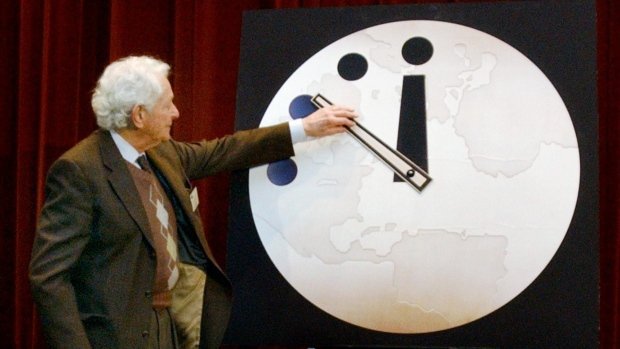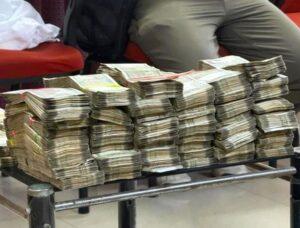Is the end of the world nigh? Maybe not, but it’s about three steps away is what the Doomsday Clock would have us believe. The much-hyped virtual timepiece says the world is still pretty screwed despite the Paris accord with Iran.
On Tuesday, the Bulletin of the Atomic Scientists announced the world’s Doomsday Clock would remain at 3 minutes to midnight. The clock was updated to 11.57 pm in January 2015. The last time it was at 11.57pm was in 1984, when the bulletin said talks between the US and Russia virtually stopped.
It is still 3 minutes to midnight. Read the #DoomsdayClock Statement: https://t.co/U34P85k0Mb pic.twitter.com/rgz4QitUKT
— BulletinOfTheAtomic (@BulletinAtomic) January 27, 2016“Three minutes and counting…” :Bulletin
From: The Bulletin of the Atomic Scientists Science and Security Board
The Bulletin have faced their fair share of ridicule with articles blaming them for crying wolf one time too many. Not available on any news stand, it’s definitely not a popular magazine, but every time the Clock’s minute hand moves, the tick triggers headlines around the world.
What is the Doomsday Clock?
Here’s how the Bulletin of Atomic Scientists describes it:
The Doomsday Clock is an internationally recognized design that conveys how close we are to destroying our civilization with dangerous technologies of our own making. First and foremost among these are nuclear weapons, but the dangers include climate-changing technologies, emerging biotechnologies, and cybertechnology that could inflict irrevocable harm, whether by intention, miscalculation, or by accident, to our way of life and to the planet.
The Doomsday Clock doesn’t make any prognostications about the actual coming of doomsday. Rather, the clock is a metaphor to illustrate how close humanity is to a global calamity, inspired both by the notion of midnight as the apocalypse and the “countdown to zero” language used before detonating a nuclear weapon.
Here’s a quick history lesson on it.
Why does it matter?
Either inching toward doom or backing away from it, the Clock’s hands signify when our planet is likely to go kaput.
John Mecklin, the Bulletin’s editor told the Scientific American blog, “It’s not a numerical answer we got by running some sort of equation or anything. It’s the best judgement of really top experts who really know these situations at a granular level.”
So, that’s a lot of very smart people, including 16 Nobel laureates, who are determining how close the world is to global catastrophe.

What are the influencing factors?
The Bulletin cited tensions between Pakistan and India (both countries have significant nuclear arsenals), nuclear modernisation processes in the US and elsewhere and the “fight against climate change” as major factors in the clock hand’s position, reported the Verge.
Cold War-era levels of tensions between US and Russia also contribute to the lack of movement of the Clock’s hand.
Continued icy relations between US.and North Korea also factored into the decision not to move the clock hands farther from disaster. It doesn’t help that NASA recently announced that 2015 was considered the warmest year in recorded history.
And people are, not surpringly, upset:
So much for Paris #climate agreement. #DoomsdayClock remains stuck at 3 minutes to midnight
— Suzanne Goldenberg (@suzyji) January 26, 2016We Still Need To Fix The Economy #Goremageddon #DoomsdayClock 🔥 pic.twitter.com/87ipuelCO8
— Casey✨ (@Patrioticgirl86) January 27, 2016.@algore Cheers 🍻… We didn’t burn up 🔥🔥 #Goremageddon #DoomsdayClock pic.twitter.com/x5nLpz7kw6
— Casey✨ (@Patrioticgirl86) January 27, 2016The @BulletinAtomic just announced that the #DoomsdayClock remains at 3 minutes until midnight. Radio DJs the world over un-queue us…
— Iron Maiden (@IronMaiden) January 26, 2016.@atrembath I find #doomsdayclock a paralyzing frame. It induces panic, not compassionate thought about how to make world a better place.
— Suzy Waldman (@SuzanneWaldman) January 27, 2016
















